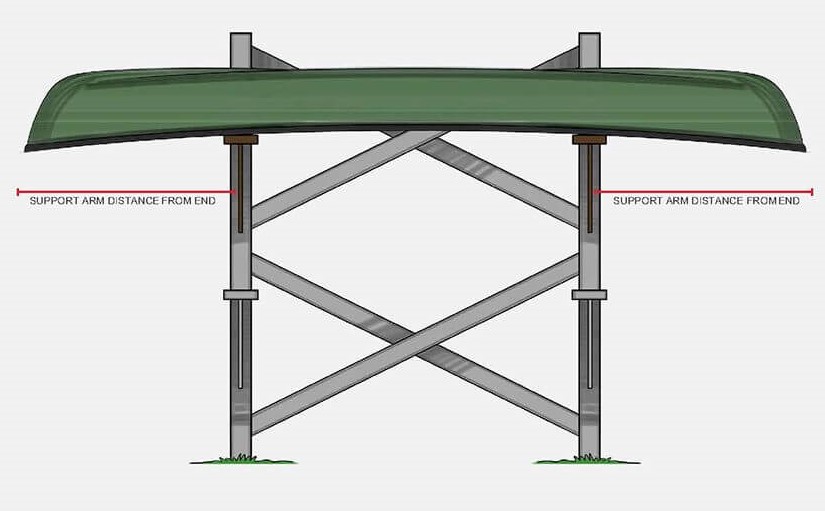Care and Maintenance
The following information is intended to provide an overview of the care, maintenance and storage of our boats and paddles.
The durability of wood
It is often assumed that wooden boats require large amounts of upkeep to stop them rotting away or drying out and splintering. It is certainly true that neglected wood will deteriorate, and the worse the care the faster this can happen. However, it is also true that ‘plastic’ boats also deteriorate if neglected. Metal fittings will rust and corrode, and plastics, including GRP (fibreglass), become brittle, or soften and lose their shape. There are many wooden canoes, upwards of half a century old, still in frequent use in Canada and the northern USA. Others of a similar age are restored and rejuvenated, usually after periods of neglect through careless storage rather than failure of the timber parts. Whether wooden or plastic, a little regular care adds years to the life of a boat, and potentially decades to a wooden one.
Maintenance
Most planked Valkyrie boats are treated with a saturator system ‘Woodskin’ as part of the building process. This oil-based product is absorbed deep into the wood, impregnating it and replacing oils and moisture destroyed by the kiln drying processes used in the modern timber industry. ‘Woodskin’ is a flexible surface coating varnish applied in thin coats. It should be touched up periodically as wear appears. This is done by sanding the marked area lightly and reapplying the product as required. The entire surface can be recovered annually with only minor preparation to the old surface.
In the case of our Skin-on-Frame canoes and sea kayaks and all of our paddles, the timber is treated with Tung oil, which is a natural oil that penetrates into the timber. The initial coat is applied 1:1 diluted with white spirit. Over the following days the mixture is left open to the air and the white spirit evaporates out leaving a more and more pure oil, the final coats then being almost pure oil. In all cases the saturation process also ensures that water cannot penetrate and lead to rot. Future treatment of the timbers simply requires additional coats of Tung oil as and when the wood appears to need it, generally on an annual basis for boats and on a monthly basis for paddles. Buffing with fine wire wool assists in keeping a smooth welloiled surface
Oil should be applied in a thin coat wiped on and left to absorb over night and then buffed away the following day. Buffing helps to develop a patina on the surface of the wood over time. The old adage of ‘Once a day for a week, once a week for a month, once a month for a year and every year for life‘ is a good general summary of the concept.
Be aware that oils with drying agents added reduce the depth of the oil penetration. They are designed to form a surface layer rather than to feed the wood. Examples of these are Linseed oil and Danish oil. Unadulterated natural oils penetrate deeper into the wood and slowly over time form a surface patina . . . . slowly but surely!
Unlike a varnished surface a well executed oiling process does not result in peeling or flaking surfaces and does not require sanding prior to reapplication.
Wooden paddles don’t enjoy lots of changes in temperature, particularly rapids ones, nor do they like being stored either damp or desiccated. They particularly don’t like sleeping beside/ above a radiator! The best place to store a paddle when not in use is in a cool dry place such as an unheated garage.
Storage – Wooden, Skin on Frame & Plastic
Water and sunlight are the key reasons for deterioration of any boat, plastic or wooden, so to maintain longevity a boat should be stored away from both. A garage or shed is the best solution, particularly if it has free movement of air, which will help to ensure moisture on and in the boat evaporates. If this is not possible, the boat can be stored outside covered with a tarpaulin or awning that allows free movement of air and minimal ingress of rain. The material should be rigged in a way to ensure that it does not lie against the surfaces of the hull since this allows moisture to gather and sit.

A canoe should always be stored gunnels down. If it is stored lying upright the full weight of the boat bears down onto the more flexible hull base, which will eventually cause buckling or flattening, ruining the boat. The gunnels and prows should not be in contact with the ground, again because of the problem of distortion of the boat. A pair of trestles or a wall mounted rack are both good solutions. In its simplest form this can be a pair of 4x4inch posts lying on the floor.




